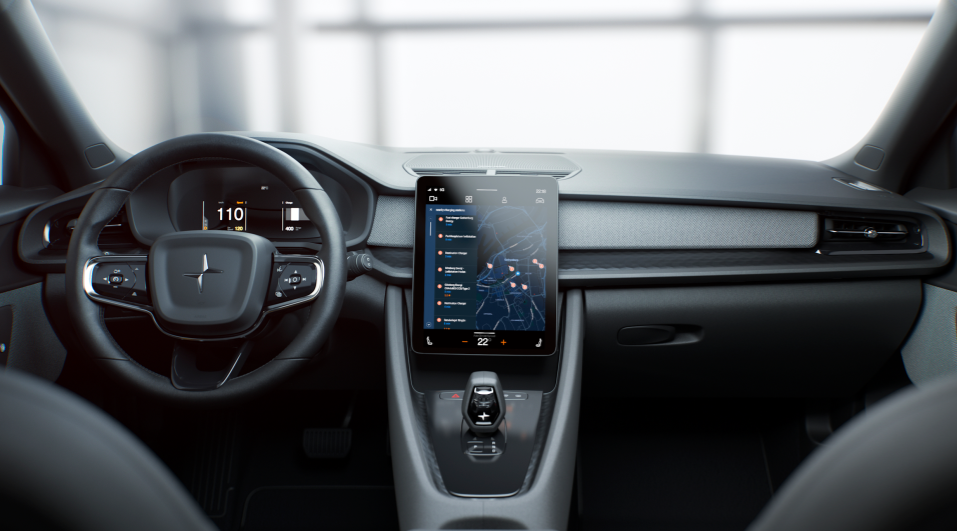It's only been a couple of months since Android 12L was made available for Android Automotive devices, but considering it's no longer the new kid on the block, it's time for another release. Google has released the latest patch notes for its car-powering OS, and while they might not look exciting on paper, it shows some real commitment on the company's part to keep automakers and drivers alike satisfied.
Mishaal Rahman at Esper.io spotted the release notes for Android Auto 13 this morning. Unlike Android 12L for cars — which included, among other things, a new quick controls feature for quickly toggling various options — Android 13 is focused on technical, behind-the-scenes changes. If you're an Android Automotive user hoping for a slate of new features, you'll likely be disappointed. That said, considering Google's platform is built for automakers to customize specifically for each model, user-facing features will always be few and far between.
Although there aren't a ton of changes here to write home about, there are a few worth highlighting. Several connectivity changes — including support for ultra-wideband and Gabeldorsche, a new version of Android's Bluetooth stack that is active up to the scanning level — made the cut. Android 12's Privacy Dashboard has made its way to cars with this release, delivering a list of sensors used by the vehicle. Google also added some new vehicle properties, including fog lights, EV charging, and more. Here's the complete list of changes:
Camera
- Android camera2 API. Allows third party consumer apps to access one or more vehicle cameras concurrently without affecting the performance and behavior of the Extended View System (EVS).
- Enumerate camera devices by relative locations. Allows clients to enumerate and open camera devices (or video streams) according to relative locations, along with hardware details (for example, device node name) hidden from clients.
- EVS hotplug events. Adds notification and handling of hotplug cameras.
Car Framework
- Car framework mainline. Added a new car framework module that includes car APIs and car services. This enables the updating of the car stack independent of Android platform versions.
- Driving safety region support. Allows apps to specify regions for driving safety and allows the system to specify a region and to provide a temporary waiver.
- Migrate the vehicle HAL from HIDL to AIDL. The HIDL HAL remains supported but new properties should only be added to new AIDL vehicle HAL.
- Support larger payload and batch calls in VHAL. VHAL can now pass larger payloads through shared memory. Batching calls allows for the more efficient sending of multiple requests.
- Navigation metadata filling for cluster. This feature extends the Navigation State Protocol Buffer in the Navigation State API with additional fields to describe navigation metadata.
-
Touch mode. Notifications are now detached from focus events in Android 13. In Android 12 and earlier, focus and touch mode are represented by the same C++ native FocusEvent. Touch mode changes are now represented in a new event,
TouchModeEvent. This new native event is dispatched against all existing windows, whether focused or not.
Connectivity
- Enable Ultra Wide Band (UWB). Provides multi-anchor support for locating UWB tags with an accuracy of 10cm.
- Bluetooth mainline integration. Turns Automotive Bluetooth into a module to enable updates independent of Android platform versions. Hidden APIs are migrated to system APIs with ongoing support from Google.
- Gabledorsch. A newer version of the Bluetooth stack is enabled, with support for automotive use cases.
- Vehicular networking. Adds controls for Ethernet-based networks, including dynamic management of IP configuration, network capabilities, application access control lists, and the ability to connect and disconnect networks on the fly.
- Reference TCU. Makes it more straightforward to integrate an external telematics ECU with Android through the Telephony HAL.
-
Projection support. Added a new API to include
VendorElementsas part of a generatedhostapdAP configuration. - API to get a list of Wi-Fi channels and country codes when Wi-Fi is turned off.
Power
- Support Suspend-to-disk. Power-off mode to preserve the contents of RAM. Suspend-to-disk and Suspend-to-RAM are supported.
- Control of the shutdown process. Allows vendors to take timely actions before and after Garage Mode.
Privacy
- Permission model for auto. Changes to the permissions model balance safety, privacy and user experience while driving.
- Post-drive permission decision reminder. Reminds users who have parked of permission decisions made while they were driving.
- Recent permission decisions. Recent permission decisions are surfaced within Privacy Settings, enabling users to change permission decisions.
- Privacy dashboard for auto. Allows users to review recent app permission usage within Privacy Settings, including a timeline of events for sensors (such as location, microphone, and camera) and sub-attribution for GMSCore usage.
Sensors
- New sensor types in the Android sensor framework. Added new Inertial Measurement Unit (IMUs) sensor types for Limited Axes and Heading to support different sensor configurations and navigation use cases.
Telemetry
- OEM telemetry. Enables OEMs to use an Android-powered infotainment system to configure and collect In-Vehicle Infotainment (IVI) and vehicle data.
User Management
- Improved user lifecycle events management. Added a new user lifecycle filter to improve performance and simplify client code.
Vehicle Integration
- New VHAL properties. Added new properites for fog lights, EV charging, trailer, vehicle weight, and wheel tick.
As Rahman noted on Twitter, these patch notes are specifically meant for system engineers working with Android Automotive, not general consumers. He's done a great job at breaking down some of the more important changes in this latest version, so I highly suggest reading his in-depth coverage of each change. It's great to see that, even as work on Android Auto slows to a crawl, Automotive continues receiving timely OS updates for the car manufacturers that rely on it. Whether it'll be enough to compete with Apple's future plans for CarPlay, however, remains to be seen.

